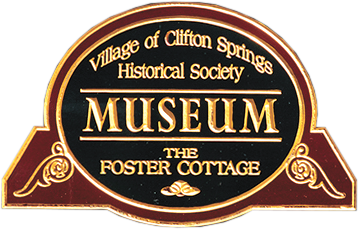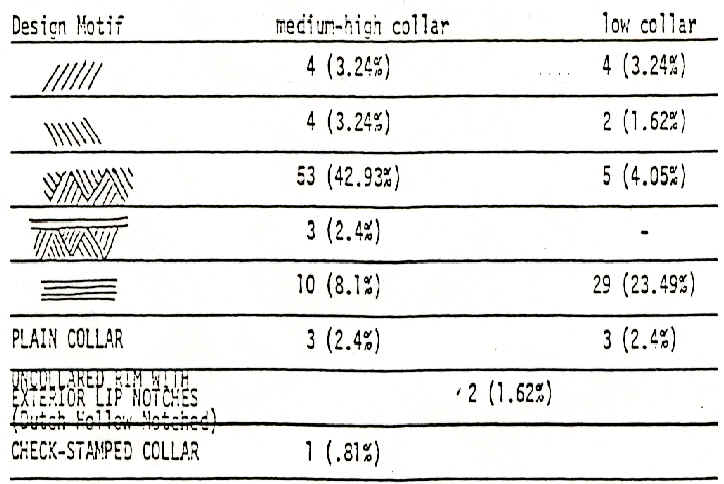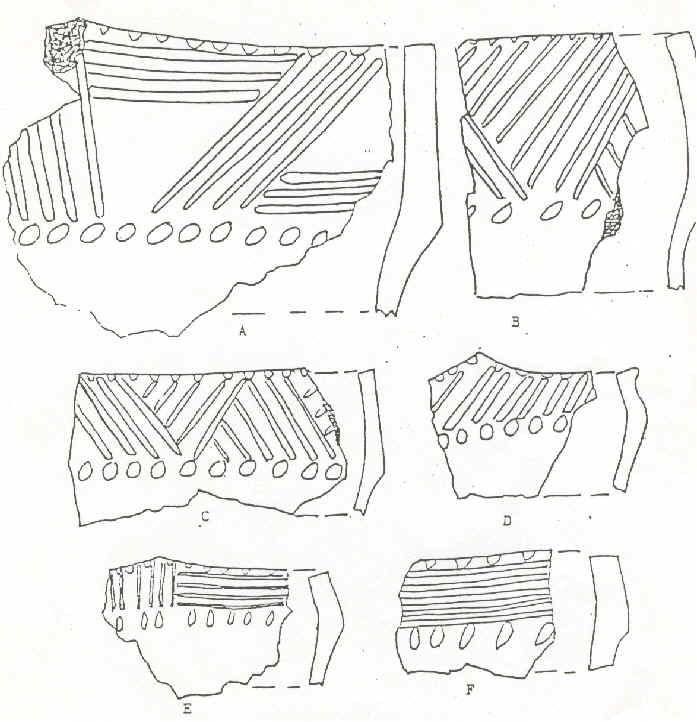Prehistoric Iroquois Settlement, Excavation at the Clifton Springs Site.
Part 5
POTTERY
Potsherds are abundant everywhere on the site, and are typically prehistoric Iroquois. Vessels were grit tempered, with collared rims bearing incised
designs with faint to moderately bold notching on collar bases and lip exteriors. Corded collar types are completely absent. Necks were constricted,
smooth, and undecorated. Vessel bodies were globular and bear check-stamping, smoothed-over check-stamping, or less commonly, were completely smooth.
Three body-shreds exhibit cord-markings. Castellation were very common, and a number of unusual variants of this decorative element were found. One
unusual specimen diverges from the usual Iroquois ceramic form. This is a portion of a small bowl., probably six inches in diameter and three inches
deep, with straight sides and a rounded bottom.
An analysis of the rim-shreds recovered shows two major pottery styles at the site. One is a medium to high collar rim with moderately broad incising
in various opposed or oblique patterns, and is more or less in conformity with MacNeish's Richmond Incised type (MacNeish 1952: 51). The other major
style is a low collared rim with from two to five horizontal lines broken by two to four vertical or oblique lines under castellation. This style
easily falls into MacNeish's Ontario Horizontal type (MacNeish . 1952:16).
Diagram shows a serration of the rims-herds uncovered showing design motifs and associated collar heights.
Pottery Rims-herds From The Clifton Springs Site (PLP 19-1)


